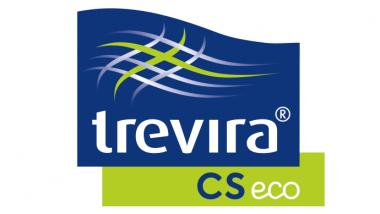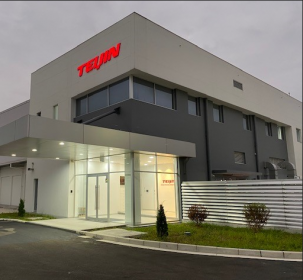Trevira CS – starting afresh
- New brand Trevira CS eco
After a challenging 2020 for Trevira CS®, a year in which the coronavirus crisis put pressure on the contract market, in particular on the hotel and event sector, and also on the cruise shipping industry, the market is starting to show some signs of improvement. Numerous new developments are seizing upon the trends that have emerged since the crisis began.
Although the coronavirus pandemic had a negative effect on individual business sectors, it also has the potential to open up new market opportunities for flame retardant Trevira CS fabrics in the long run. The increase in people working from home and the longer and more frequent stay within one’s own home have led to a change in perspective in terms of the relevance of interior design. The design of the living space has undergone a revaluation. Sustainability, durability, high quality, and the desire for safe products that contain little to no harmful substances are defining criteria for selecting a new textile interior. The colour range of the new Trevira CS developments is directed specifically towards this trend and often comes across as discreet and close to nature. After Trevira CS products have found their way more and more into private homes, the new Trevira CS collections include numerous attractive textiles not only for the contract sector but also for the residential sector.
In the contract sector, notably in the hotel industry, the trends towards sustainability and quality are likely to continue to grow. Moreover, there is an increase in awareness as far as hygiene requirements are concerned. Textiles that are easy to clean without losing their appearance or their functionality can excel here. Accordingly, products ordinarily used in the healthcare sector might start to be of interest to the hotel and catering industry, public spaces, the transport industry, and to offices. This will apply in particular to areas where there is a regular flow of visitors and where people come into direct contact with fabrics. Antimicrobial textiles provide additional protection in these situations. Besides their flame retardancy, many new Trevira CS products integrate additional functions such as noise or sun protection.
Trevira has launched the Trevira CS eco brand for flame retardant textiles that consist of recycled Trevira products.
The new Trevira CS eco brand unites sustainability and flame retardancy. Trevira offers products for this which have been manufactured through different recycling processes. The flame retardant filament yarns are based on the use of recycled PET bottles (post-consumer recycling). Textiles bearing the Trevira CS eco trademark consist of at least 50% recycled materials.
Trevira uses an agglomeration facility to recycle reusable waste materials from production to manufacture recycled fibres that, after further processing, retain the same quality and performance characteristics as the original products (pre-consumer recycling).
Trevira GmbH















